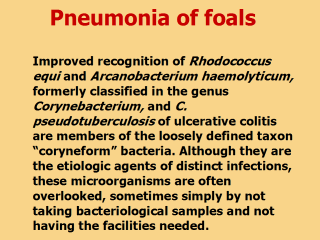 |
R. equi,
long known as an important pathogen of immature horses, has become an
opportunist infecting immunodepressed humans. The toxin-influenced
pathogenesis of these 3 coryneforms is reasonably wellknown, including
demyelinization, but expected to be much better defined in perhaps a decade.
A. haemolyticum is known to produce uncharacterized hemolytic agent(s)
and 2 defined extracellular toxins: a neuraminidase and a phospholipase D (PLD)
acting preferentially on sphingomyelin and generating ceramide phosphate in
the target membrane. As elaborated by A. haemolyticum and closely
related C. pseudo-tuberculosis, PLD is wellknown to demyelinize
nerves.
|
